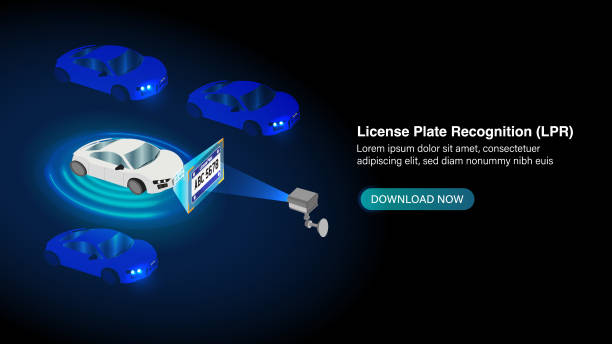In today’s data-driven world, automation and artificial intelligence (AI) have transformed how security and surveillance systems operate. One of the most impressive applications of AI and machine learning is the license plate recognition system, which has become a vital tool for law enforcement, traffic management, and smart city development. This advanced technology allows authorities to monitor and analyze vehicular movement in real-time, improving public safety and operational efficiency. With machine learning continuously refining the accuracy of detection and recognition, license plate recognition systems are becoming smarter, faster, and more reliable than ever before.
A license plate recognition system (LPRS) uses optical character recognition (OCR) technology to identify vehicle license plates from digital images or video frames. Cameras capture the plate, and the system processes the image through algorithms to detect, read, and store the plate number. Initially, these systems faced challenges due to varying lighting, plate designs, and environmental conditions. However, advancements in AI and machine learning have significantly improved their performance, enabling precise recognition even in low-light or adverse weather conditions.
Modern license plate recognition systems are not just passive data collectors. They are integrated with powerful analytics tools and databases that help authorities instantly verify vehicle identities, detect stolen cars, and enforce traffic rules efficiently.
Machine learning (ML) has revolutionized the way license plate recognition systems interpret visual data. Instead of relying solely on static algorithms, ML-based models learn from vast datasets containing diverse plate styles, fonts, and environmental variations. This continuous learning process allows systems to identify and adapt to new conditions without manual intervention.
For example, convolutional neural networks (CNNs), a key component of ML, enhance object detection by training the system to recognize various plate shapes, textures, and colors. ML also helps in reducing false positives, where the system may previously have misread characters due to reflections or dirt. Today, AI-driven recognition systems achieve accuracy rates exceeding 95% in real-world environments — a level once considered unattainable.
These ML enhancements not only improve identification precision but also optimize processing speed, allowing vehicles to be scanned and analyzed within milliseconds.
The license plate recognition system is no longer limited to policing or toll collection. Its applications span multiple sectors, each benefiting from automation and intelligent data handling:
- Law Enforcement: Real-time monitoring helps police identify stolen or suspicious vehicles instantly, streamlining investigations and response times.
- Traffic Management: Integrated systems enable authorities to track vehicle density, regulate flow, and identify traffic violators effectively.
- Parking Management: LPRS automates access control and billing in parking lots, eliminating manual errors and enhancing user convenience.
- Logistics and Transportation: Fleet operators use it to track vehicle movement, reduce unauthorized usage, and improve operational transparency.
- Border Control: National agencies deploy license plate recognition for cross-border monitoring, ensuring secure and efficient vehicle screening.
Across all these sectors, the combination of AI and automation helps organizations save time, improve accuracy, and make data-driven decisions faster.
One of the most powerful impacts of the license plate recognition system lies in its contribution to Transforming Public Safety. Cities and law enforcement agencies leverage AI-driven LPRS to maintain safer roads and prevent crime. By automatically identifying vehicles linked to criminal activity, stolen property, or traffic violations, these systems act as digital sentinels in urban environments.
The ability to track and analyze vehicular data in real-time allows for rapid response in emergency scenarios. For instance, when a vehicle involved in an incident is detected, authorities can instantly receive alerts, locate the vehicle, and take preventive measures. This level of automation not only reduces human workload but also strengthens overall community security.
Furthermore, during large public gatherings or events, license plate recognition systems provide enhanced situational awareness by monitoring vehicle entry and exit points. The integration of predictive analytics allows officials to detect unusual movement patterns, supporting proactive threat management.
Artificial intelligence has significantly optimized AI for Traffic Regulation, allowing license plate recognition systems to perform beyond traditional monitoring. AI algorithms analyze traffic patterns in real time, detect violations such as speeding or red-light running, and generate instant alerts. When paired with traffic management software, the data can be used to improve signal timing, reduce congestion, and enhance commuter safety.
This AI-driven approach ensures that traffic management is no longer reactive but predictive. Authorities can forecast high-traffic zones, deploy resources accordingly, and manage road safety with greater efficiency. Machine learning also plays a key role in minimizing human intervention, ensuring consistent enforcement while reducing bias or errors.
The integration of AI and ML technologies has brought forward several advantages for modern license plate recognition systems:
- Higher Accuracy: AI algorithms can recognize plates under challenging conditions like motion blur, glare, or dirt.
- Faster Processing: ML models enable instant detection and comparison against large databases.
- Cost Efficiency: Automation reduces manual monitoring costs and operational inefficiencies.
- Scalability: Systems can easily integrate with existing infrastructure across cities or regions.
- Real-Time Alerts: Automated notifications improve response times for security or traffic incidents.
- Data Insights: Advanced analytics provide actionable insights for urban planning and safety enhancement.
Together, these benefits illustrate how far LPRS technology has evolved from basic recognition systems to intelligent, real-time surveillance tools.
As the demand for smart surveillance continues to rise, several global and regional players are leading innovation in this field. Top companies offering advanced license plate recognition systems include:
- Vehant Technologies – A leading Indian company specializing in AI-powered traffic management and surveillance systems, offering state-of-the-art LPRS for urban safety and law enforcement.
- Genetec Inc. – Known for its unified security platform integrating LPR with video management and analytics.
- Neology Inc. – Focuses on mobility solutions including tolling and enforcement technologies powered by machine learning.
- Vivotek – Offers AI-integrated LPR cameras for intelligent monitoring across transportation and commercial sectors.
- Axis Communications – Provides high-performance LPR solutions with analytics that adapt to regional plate designs and traffic conditions.
These companies continue to innovate, combining AI, edge computing, and IoT integration to create highly responsive systems for modern security ecosystems.
The future of the license plate recognition system looks promising, with advancements in deep learning, 5G connectivity, and edge computing enhancing performance and accessibility. Next-generation systems will likely incorporate predictive analytics and behavioral modeling to anticipate risks before they occur.
Moreover, the integration of LPRS with other technologies like facial recognition, drone surveillance, and smart infrastructure will create a comprehensive security framework for cities. Governments and enterprises will increasingly rely on these connected systems for everything from traffic optimization to emergency management.
As ethical considerations grow, future innovations will also prioritize privacy safeguards and data protection to balance security with individual rights.
The evolution of the license plate recognition system reflects how AI and machine learning are redefining modern surveillance and public safety. What started as a basic tool for vehicle identification has now become an intelligent system capable of real-time decision-making and predictive policing. From improving traffic regulation to securing urban spaces, the fusion of AI and data analytics continues to transform how cities function and how law enforcement operates.
Companies like Vehant Technologies and other industry leaders are shaping the next generation of intelligent transportation and security systems. As machine learning models grow smarter and more adaptive, license plate recognition will remain a cornerstone technology in building safer, more efficient, and intelligent cities worldwide.

